“If this isn’t nice, what is?” Kurt Vonnegut’s vow to repeat his Uncle Alex’s mantra when things were going “sweetly and peacefully” has been much on my mind during various idylls this war-torn summer. It certainly applied to hearing three boys and a girl in their early teens play a cloudless early Haydn string quartet in the beautifully restored small neoclassical theatre of a perfect Umbrian hill town. But as so often with troubles elsewhere always at the back of our minds, nothing was quite that simple.
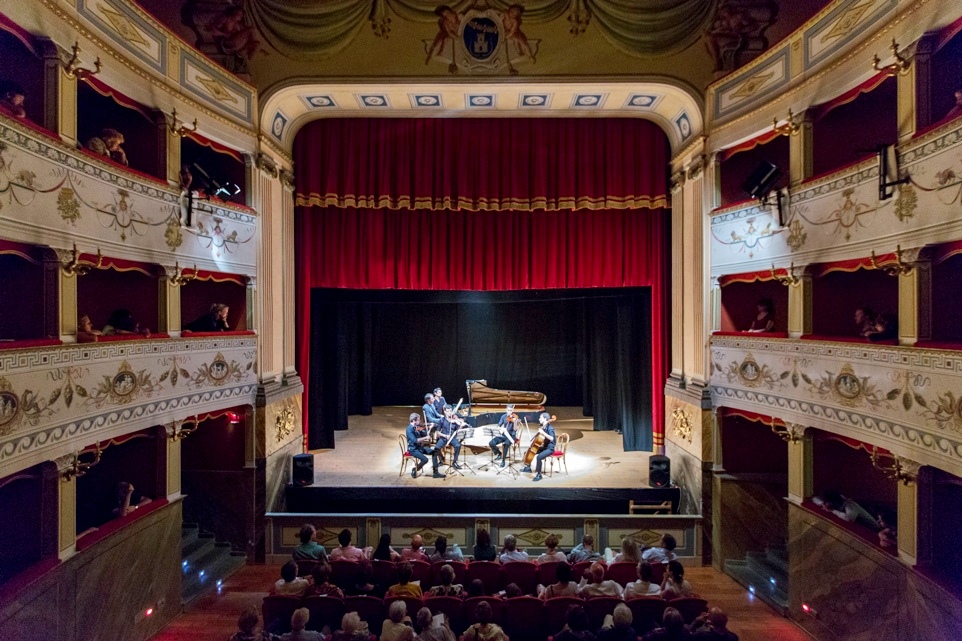 The young people were totally focused on the work in a performance of astonishing subtlety and nuance. But between rehearsals and performance their thoughts – as Palestinian and Jewish Israelis of the Nazareth-based Polyphony Foundation whose driving force Nabeel Abboud Ashkar I interviewed along with his pianist brother Saleem last week – had been much with their families at home during the latest Gaza crisis. (Pictured: performance of the Dvořák Piano Quintet in Città della Pieve's Teatro degli Avvaloranti.) And the nerve-centre of the Incontri di Terra di Siena festival, which had welcomed them and other musical youth groups, is the Villa La Foce looking over the now-peaceful Val d’Orcia, a harsh valley and major route from north to south in Italy the few settlements of which have been devastated over the centuries by Goths, Florentines and Germans.
The young people were totally focused on the work in a performance of astonishing subtlety and nuance. But between rehearsals and performance their thoughts – as Palestinian and Jewish Israelis of the Nazareth-based Polyphony Foundation whose driving force Nabeel Abboud Ashkar I interviewed along with his pianist brother Saleem last week – had been much with their families at home during the latest Gaza crisis. (Pictured: performance of the Dvořák Piano Quintet in Città della Pieve's Teatro degli Avvaloranti.) And the nerve-centre of the Incontri di Terra di Siena festival, which had welcomed them and other musical youth groups, is the Villa La Foce looking over the now-peaceful Val d’Orcia, a harsh valley and major route from north to south in Italy the few settlements of which have been devastated over the centuries by Goths, Florentines and Germans.
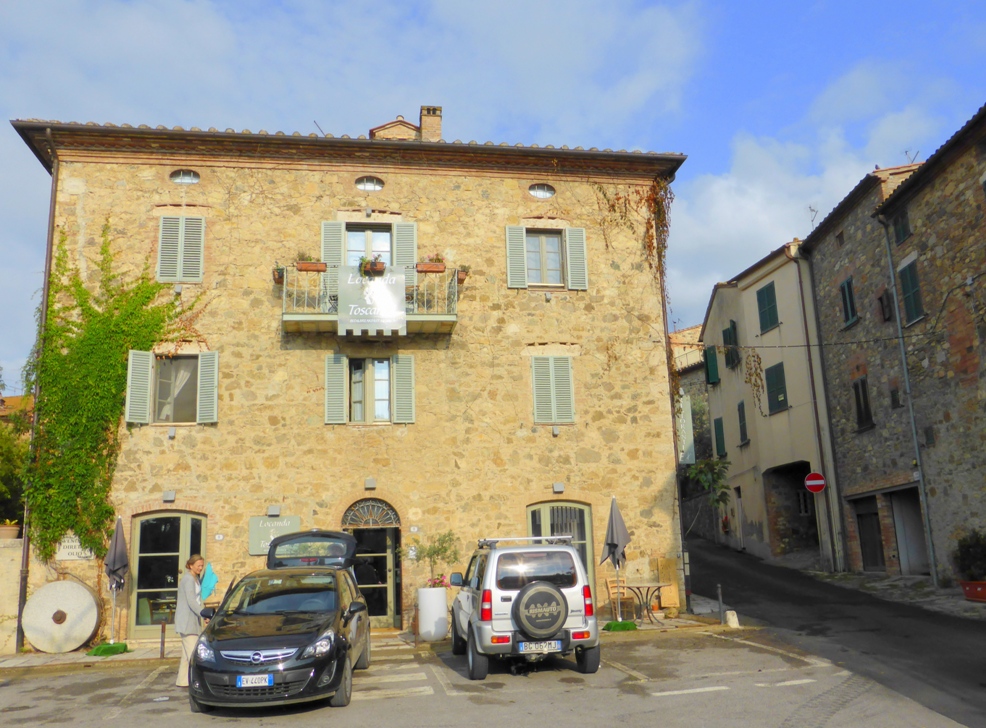
Slowly the apolitical Iris, having turned a blind eye to news of murders and repressions countrywide despite mixing in left as well as right-wing circles, came to realize the horrors of the regime. During the war she and her husband earned the devotion of countless partisans and soldiers of many nationalities, feeding and sheltering them at great personal risk as the front came to La Foce – a time lucidly recounted in Iris’s most famous book, War in Val d’Orcia. You can see why the Origos fell in love with the harsh valley and its crete senesi or low clay hills "as bare and colourless as elephants' backs, as the mountains of the moon" around the time of their marriage in 1924, and why it was such a challenge to get long-term family friend and architect Cecil Pinsent to design a green and formal garden over the slopes beyond the Villa La Foce.
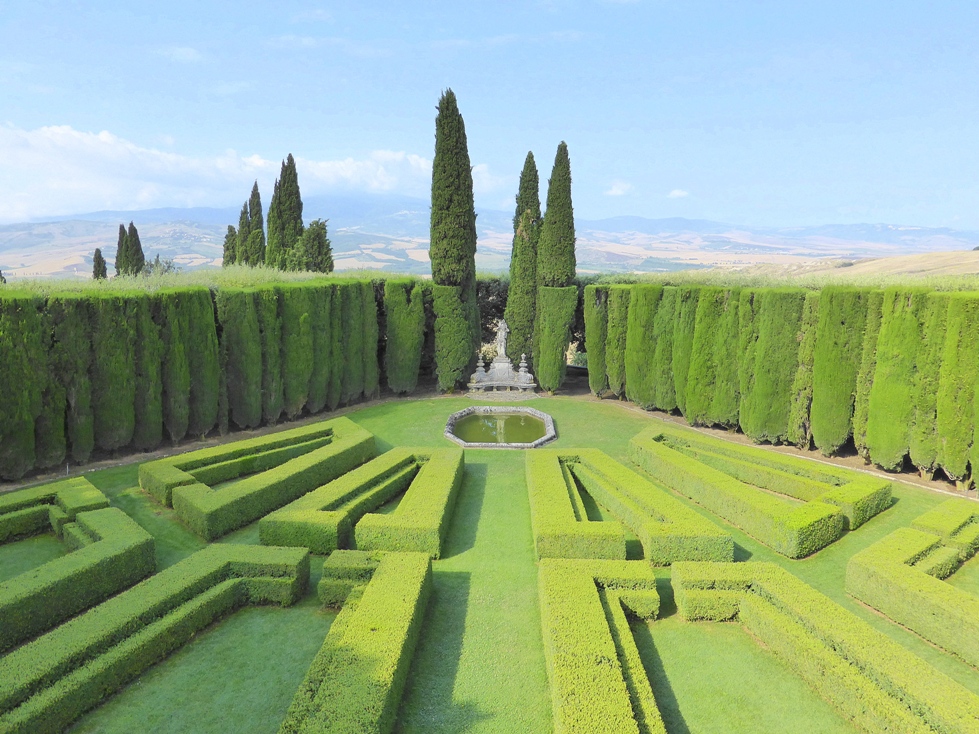
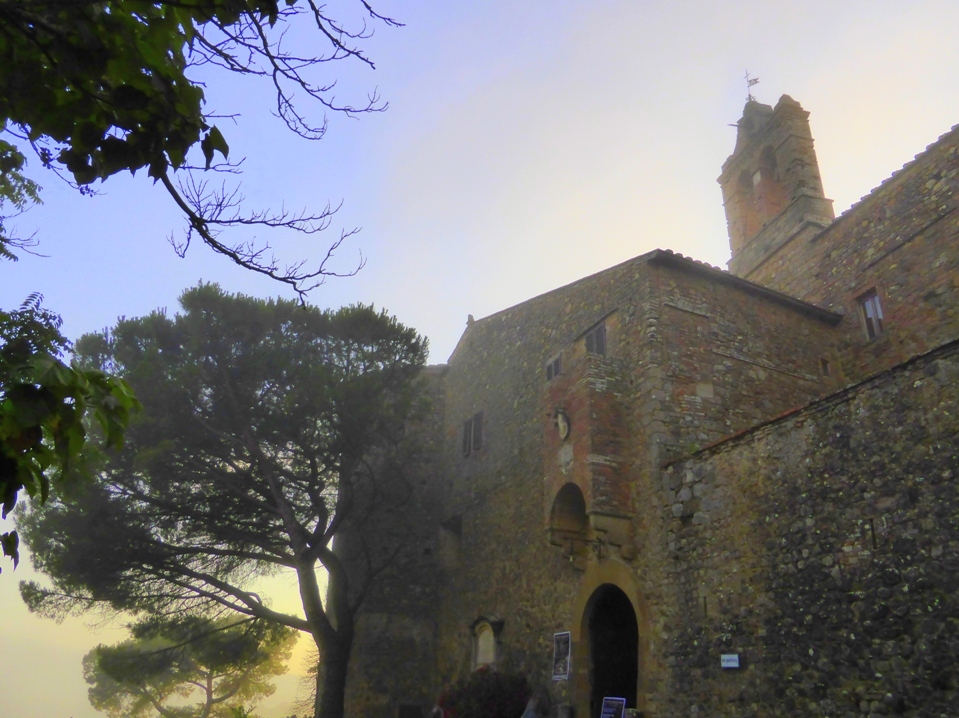
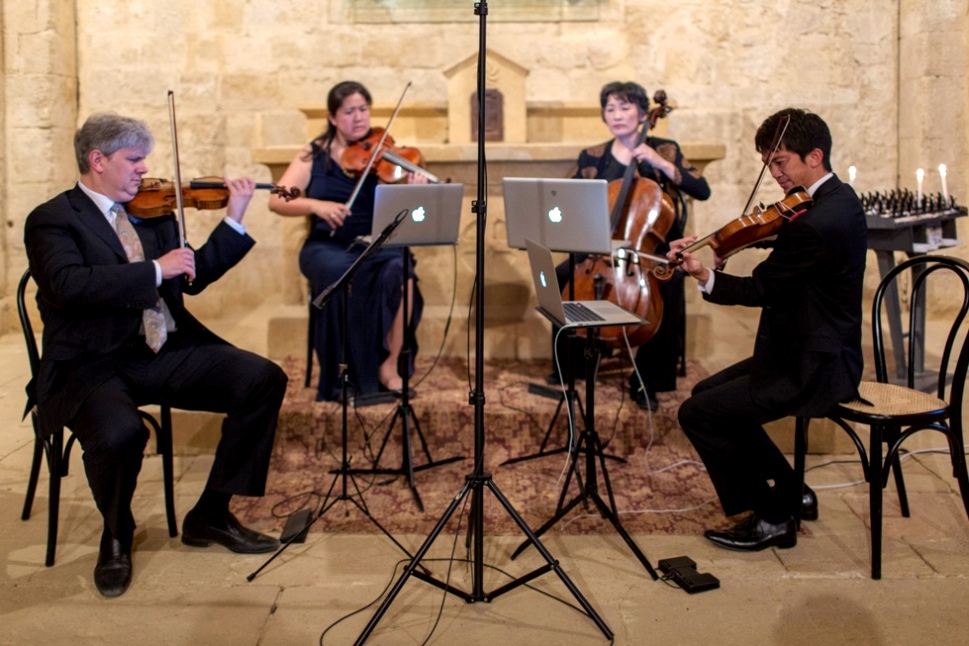 The Borromeos’ tough but energising journey through Bartók's Second, Fourth and Sixth Quartets was accompanied by iBooks with each player reading from the full score (pictured right: their first concert in the castle courtyard) – they use original manuscripts when they can – and a fascinating audience mix of young musicians with patrons local and American. Antonio Lysy, Benedetta’s son and founder of Incontri in Terra di Siena, is not only an international soloist but also Professor of Cello at Los Angeles’ University of California. So he brings with him not only students from UCLA but also such worthies as the venerable president of LA’s Philanthropic Society and their circle.
The Borromeos’ tough but energising journey through Bartók's Second, Fourth and Sixth Quartets was accompanied by iBooks with each player reading from the full score (pictured right: their first concert in the castle courtyard) – they use original manuscripts when they can – and a fascinating audience mix of young musicians with patrons local and American. Antonio Lysy, Benedetta’s son and founder of Incontri in Terra di Siena, is not only an international soloist but also Professor of Cello at Los Angeles’ University of California. So he brings with him not only students from UCLA but also such worthies as the venerable president of LA’s Philanthropic Society and their circle.
Local money also funds individual events. Sir John Eliot Gardiner’s predictably inspiring talk on Bach in Montepulciano’s Palazzo Ricci, base of the Cologne-born European Academy of Music and Arts where many of the ITS's intensive rehearsals and masterclasses take place, was made possible by his host in a remote hotel complex; it benefitted a Utopian crowd of young musicians, eager for their paperback copies of Gardiner’s instant classic Music in the Castle of Heaven to be signed (pictured below: its author with Antonio Lysy).
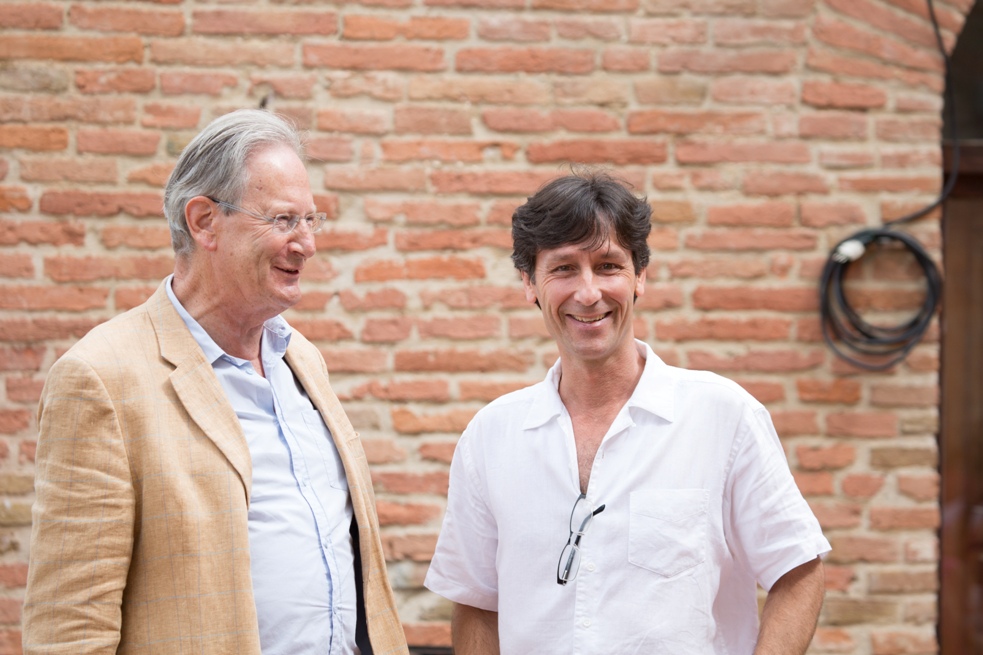 Taking away with me a new personal heaven in one of JEG’s recorded examples, the heartrending dialogue between soprano and oboe in Cantata BWV 105, I rushed up the hill as the storm began to buy recorder batteries for my imminent interview with the Ashkar brothers and found myself not unwillingly held in the Duomo with its fabulous Gothic altarpiece by Taddeo di Bartolo.
Taking away with me a new personal heaven in one of JEG’s recorded examples, the heartrending dialogue between soprano and oboe in Cantata BWV 105, I rushed up the hill as the storm began to buy recorder batteries for my imminent interview with the Ashkar brothers and found myself not unwillingly held in the Duomo with its fabulous Gothic altarpiece by Taddeo di Bartolo.
In this tight schedule, local treasures had to be glimpsed between events. I persuaded Harry Eyres - ardent Horatian, all-round enthusiastic, writer of the Financial Times' The Slow Lane column - to join me in breaking free of the milling around before the Polyphony Foundation’s concert in the Teatro degli Avvaloranti of Città della Pieve. We quickly scented our way to the works of local boy Perugino in the Duomo – a Baptism of Christ luminous in the fading light on a side chapel and a vivid Madonna and Saints at the High Altar (pictured below), its bright red flags of the town bearing witness to the continuity of the place’s history. Sadly we were in town too late in the evening to catch the acknowledged gem of the Perugino legacy, an Adoration of the Magi in the tiny Oratorio di Santa Maria dei Bianchi; it had been on the agenda of the young musicians’ education programme here following a lecture by Maxim Vengerov’s art-historian wife Olga Gringolts.
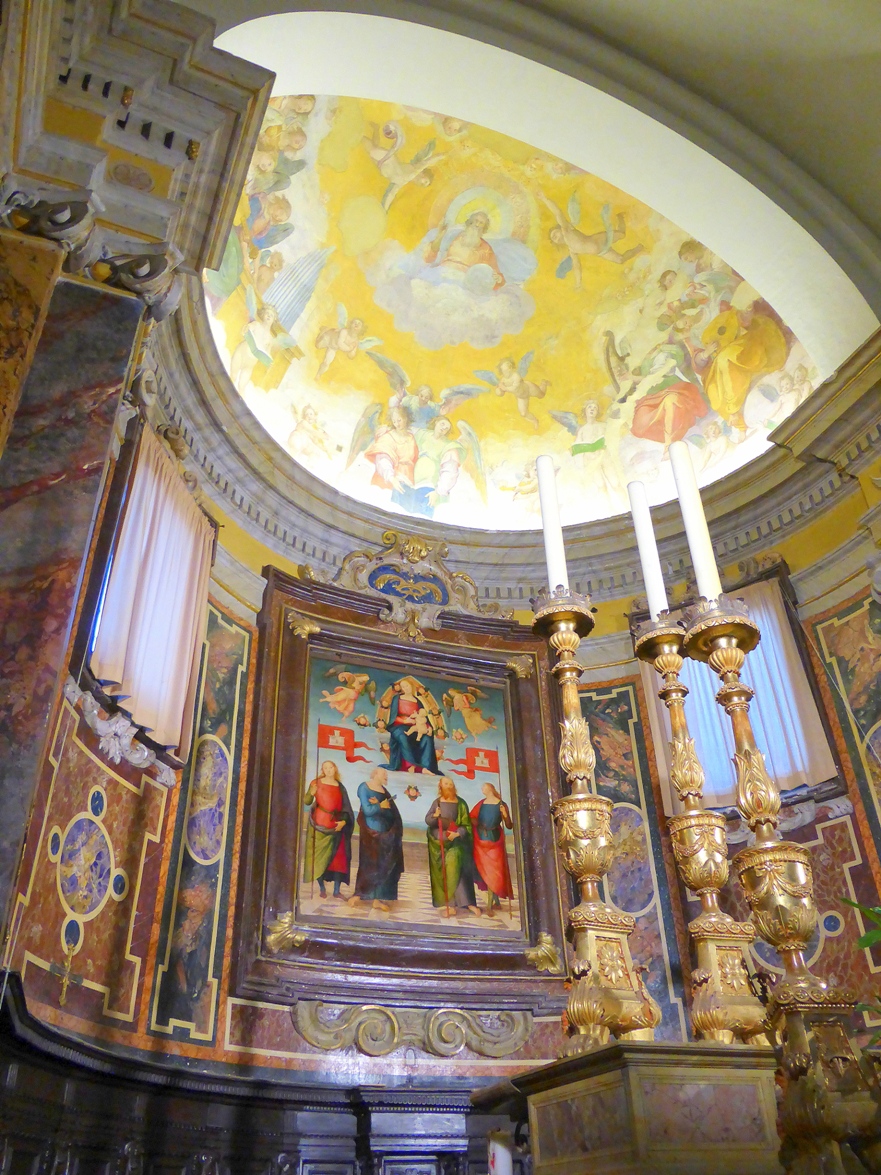
One essential value of festivals like these is the time to bond, the opportunity over days to see the same people at the same concerts – and in this case that meant patrons and students, not just from Nazareth and Los Angeles but also the International Menuhin Music Academy (Alberto Lysy, Benedetta’s late husband, and Antonio's father, was a protégé of Yehudi Menuhin, whose visit to La Foce led to the introduction). My fleeting visit, cut short by a last-minute invitation to talk before a Prom, gave me no chance for that continuity, but it ended with a serendipitous meeting on the train back to Florence with the first violinist and cellist of the Borromeo Quartet, Nicholas Kitchen and his wife Yeesun Kim, travelling in for a day’s sightseeing with son Christopher.
So I urged on them Tippett’s last quartet and the septet arrangement of Strauss’s Metamorphosen, while in return I got a masterclass on the extraordinarily detailed dynamic markings in Beethoven’s quartet manuscripts, fruits of Kitchen's research previously laid out in a lecture to the students before my arrival. Something to pursue, a link with the future like my meeting with the Ashkar brothers: musical riches at this level never end once festival pleasures are over.



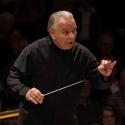
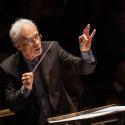



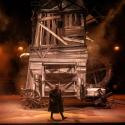
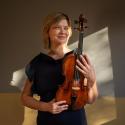
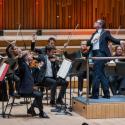
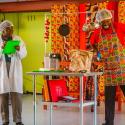
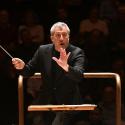
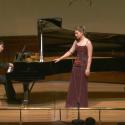
Add comment